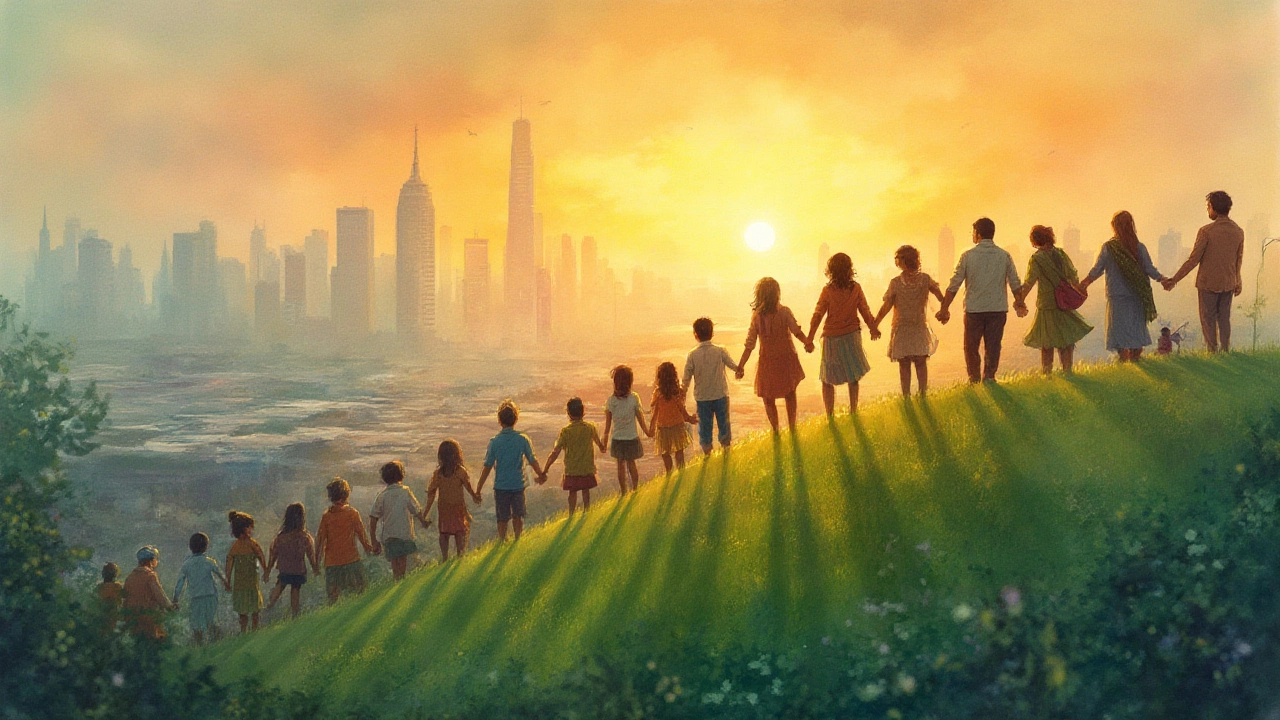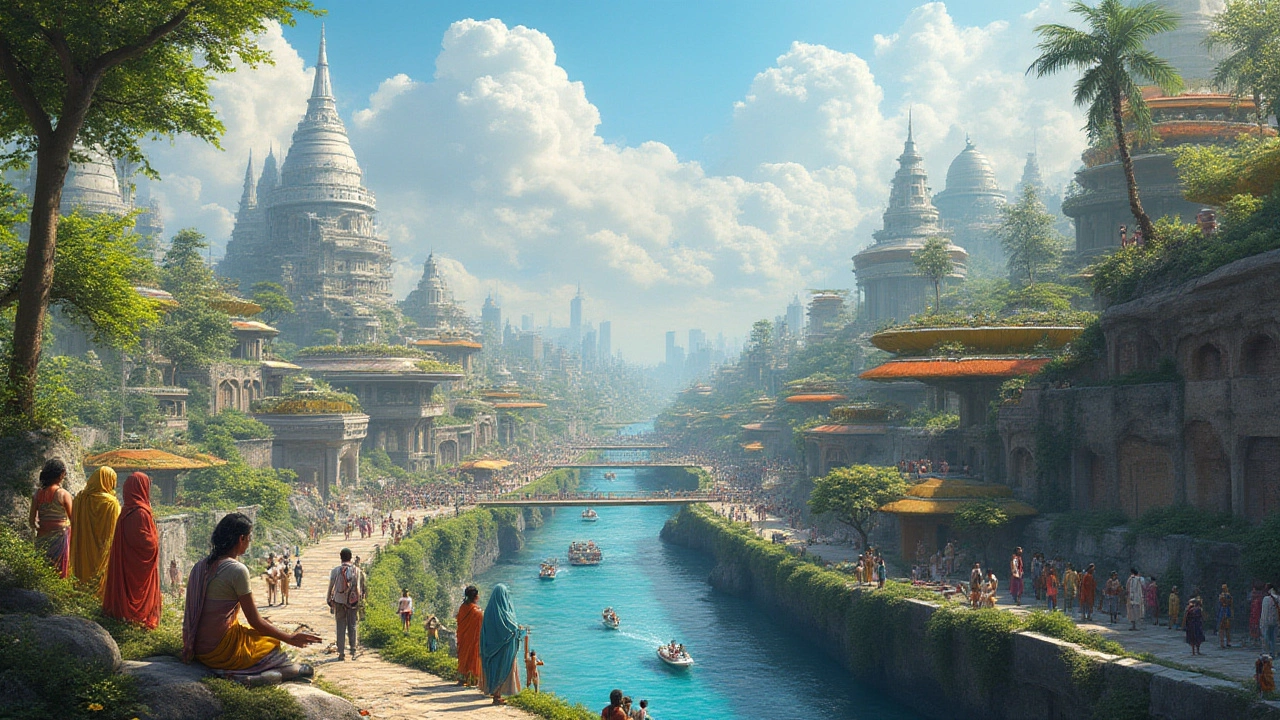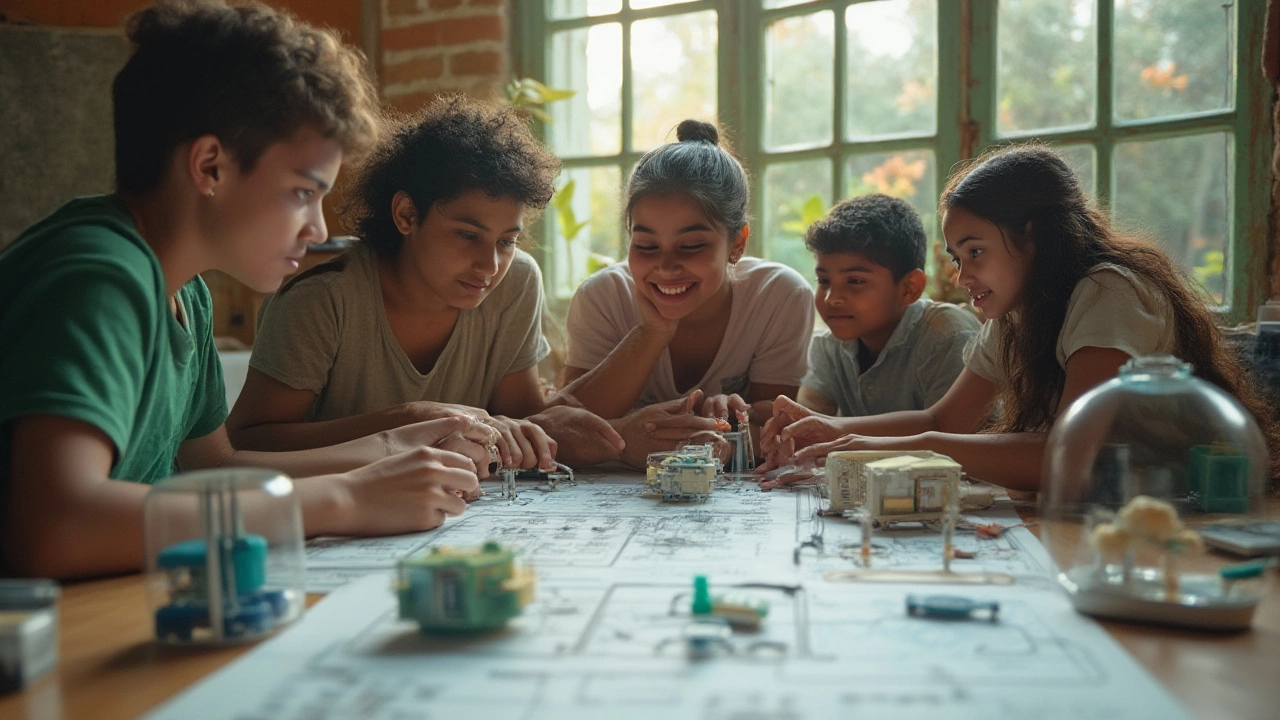My Vision for India: A Roadmap to Progress and Unity
 Jul, 17 2025
Jul, 17 2025
The first time I went to Mumbai's Chhatrapati Shivaji Terminus, I was surrounded by a rush of people, languages, and energy so wild it felt like the beating heart of India itself. That’s when I realized, this country is a universe—messy, wild, beautiful, and absolutely unstoppable when it comes together. But I won’t pretend everything’s perfect. India’s still packed with missed chances, communities waiting for a proper shot, and millions hustling for their space and dignity. When I think about my vision for India, I don’t see a utopia with flying cars and glass skyscrapers everywhere. I see a country where no one’s left behind at the station, where every hustler gets a fair shake. India means possibility, and my dream is to unlock it for everyone, everywhere, whether they’re in a goat-filled Ladakhi village or a high-rise in Bengaluru.
Too many times, we talk about big dreams but get trapped by the same problems—pollution, corruption, shaky education. Let’s cut through that, skip the slogans, and talk real. What would it look like if we actually fixed these things? If you’re picturing something huge, you’re spot on. The road from now to then? Not easy, not quick, but absolutely worth it. Here’s what sits at the core of my vision for India: putting people first, building with heart and brain, linking progress with kindness, and not letting our differences break us but fuse us into something stronger than steel.
Building a Just and Inclusive India
India’s superpower isn’t its size or history—it’s people, all kinds, all colors, all beliefs. Give these people fair ground, and see what happens. But here’s the honest truth: we haven’t always played fair. Millions have to fight bias because of their caste, faith, gender, or bank balance. We sweep street kids out of sight before a foreign leader arrives, but what about every other day? Being honest about who’s left out is the first step toward fixing it.
Start with education—no, not just rote learning and memorizing answers. A progressive India demands schools that spark curiosity, teach kids to think, question, solve, and lead. Don’t believe textbooks can change lives? In 2024, Delhi’s government schools ranked above many private schools for the first time, all because of investments in teachers and new learning methods. It proves that turning around broken systems isn’t impossible—if you care, invest, and innovate.
Next, look at health. One NITI Aayog report from last year found over 65% of Indians still pay for medical care out-of-pocket. That means every time someone in the family gets sick, parents might have to choose between medicine and rent. My vision? Clinics in every village with tech-enabled advice, digital records, and enough doctors who actually show up. If Rwanda can use drones to fly blood supplies to remote villages, why can’t India use telemedicine and solar clinics to make healthcare universal?
But it doesn’t stop at basics. Women in India are brilliant—look at ISRO’s rocket scientists and sports stars like PV Sindhu—but millions are pushed out of school or never given a chance at jobs. True progress can’t happen when half the population is held back. A 2023 UNICEF report showed that each additional year of secondary education for girls reduces the chances of early marriage by almost 6%. That’s not a statistic, that’s freedom. Real dignity comes when every woman feels safe enough to take a bus at midnight, study engineering, or start a business from scratch, no apologies, just ambition.
Of course, inclusion means fighting religious polarisation, too. The India I want is one where Diwali and Eid aren’t causes for tension, where kids grow up loving biryani and daal chawal with zero suspicion, and where voting is about dreams, not divisions. The Constitution isn’t just a historic paper—it’s the anchor, and my vision for India sticks to its promise: justice, equality, and liberty for all. If we can set this as our north star, we’ll never drift too far off course.

Harnessing India’s Potential with Smart Growth
There’s no shortage of raw ambition in India. Walk through a tech park in Hyderabad or a startup hub in Gurugram, and you’ll feel it buzzing. Everyone’s dreaming of the next big leap—fintech, clean energy, AI, you name it. But for every unicorn startup, there’s a village yet to get decent Wi-Fi or clean water. Nothing kills ambition like a leaky roof or blackouts or pothole-ridden roads. Growth can’t just pile up in pockets, not if we want to lead the world stage.
Connectivity is huge. UPI took digital payments mainstream—by July 2025, India leads the world with over 15 billion transactions every month, according to NPCI data. That leap happened because regular folks could use cheap data, simple apps, and a national payments backbone. Now imagine that same mindset applied to transportation and logistics—think affordable bullet trains connecting cities, electrified local buses in every district, and smart traffic lights that actually keep traffic moving in Bengaluru or Patna. Reliable infrastructure isn’t a luxury, it’s the backbone for equal opportunity.
Jobs are the next pillar. India’s youth—almost 65% of the population is under 35—have restless energy. But every year, millions leave universities and can’t find the right job, or any job at all. What’s the fix? Two words: skill + scale. Instead of chasing only engineering or medicine, why not make trades—like electricians, plumbers, solar installers—cool, high-status, and well-paid? Germany pulled it off through apprenticeships and partnerships between schools and factories. India can too. Local industries, crafts, sustainable businesses—all can thrive with the right push.
And when you talk growth, you can’t miss agriculture. Farmers still feed the country, but deal with ancient infrastructure, debt traps, water shortages. I want to see cold storage, drone-based crop monitoring, and direct, fair markets that cut out predatory middlemen. Just last year, a startup in Pune used AI to predict pest outbreaks for tomato farmers—saving yields by over 30%. Imagine scaling that up, and what it could do for food security and farmer incomes. Technology should not just be about cities and startups, but about real lives on the ground.
There’s also a new push towards clean energy. India leads the world in solar growth—surpassing 70 GW in total solar power by early 2025, reports from MNRE confirm. But we still burn too much coal and choke under smog. My vision puts a solar panel on every rooftop, wind turbines along our windy coastlines, and buses and rickshaws running quietly on batteries. This is not just about protecting the planet—it’s about clean lungs, cheaper power bills, and fewer blackouts. If the world expects leadership on climate, let’s show them how it’s done, Indian style—jugaad, yes, but with ambition that shakes the earth.
Our tech exports already make up over 8% of GDP, according to RBI estimates, but what if we turned India into the design and innovation lab of the world? Imagine affordable, eco-friendly gadgets, smart clothing, and electric bikes built in Nagpur or Coimbatore setting global trends. Innovation isn’t a Silicon Valley monopoly—India’s proved again and again it can lead, if given trust, resources, and a stage. That’s the growth I want—not just big GDP numbers, but prosperity in every home, every street, every village square.

Cherishing Identity and Championing Unity
Sometimes I hear friends grumble, "India’s just too complicated—too many languages, religions, and rivalries." But that’s exactly what makes us magic. No other country celebrates so many new years—Ugadi in Andhra, Baisakhi in Punjab, Gudi Padwa in Maharashtra. Where else do you find five major world religions thriving side by side, not always peacefully, but with grit and stubborn hope? My vision is about making this diversity the foundation of unity, not its enemy.
That starts with every kid learning to love their identity, and respect others. Too often, we push English as a ladder to success, but lose mother tongues and stories in the process. The 2022 India Language Survey found that over 240 local languages are at risk of extinction in the next decade. These are not just words—they are windows into unique cultures, wisdom, and humor. My ideal India celebrates home languages in schools, TV, and even government—not as nostalgia, but as real, living treasures.
At the same time, integration matters. You should never have to hide your festival or name to fit in. India taught the world what it means to "live and let live" long before it became a hashtag. The Partition, anti-Sikh riots, Gujarat, and Manipur—our history has dark chapters. It’s time we faced them, learned the right lessons, then promised to rise above. Real unity means thinking beyond “us versus them”—whether that’s about language, state, caste, or neighbourhood. Strong societies heal old wounds, they don’t hide them.
Technology can help here too. Social media often gets flak for spreading hate, and sure, Twitter wars are ugly. But look at how young Indians use it to teach each other languages, fundraise for strangers, and cheer small creative businesses. In 2023, during Cyclone Biparjoy, people from all over India sent help to Gujarat through mutual aid groups and Instagram appeals. That’s the spirit—using our connected world to build friendships, not just followers.
But unity isn’t just a digital game. It’s felt when a Tamilian and a Manipuri work side by side in a Delhi startup, or when we cheer India’s cricket team as one, forgetting every difference. It’s reinforced in every small kindness—helping a lost tourist, teaching an elderly neighbor to use WhatsApp, or sharing rotis across community borders at langars. True progress is when language or religion or sex never becomes a stumbling block, just part of the bigger Indian story.
Here’s a tip: visit a state you’ve never been to, try food that’s outside your comfort zone, have a real conversation with someone who’s nothing like you. That’s the India I want—curious, open-hearted, fiercely proud but never hostile. Strength rooted not in uniformity, but in the constant weaving together of a billion threads.
If we focus on real inclusion, practical development, and nurturing what joins us, there’s nothing this country can’t do. I picture an India where no one sleeps hungry, where girls bike to school with heads held high, where a Dalit entrepreneur runs a unicorn, and where we remember—in every festival, every stadium, every public square—that being Indian is our greatest power. We’ve got the people, the history, and the heart. All that’s left? Belief, and some honest work.